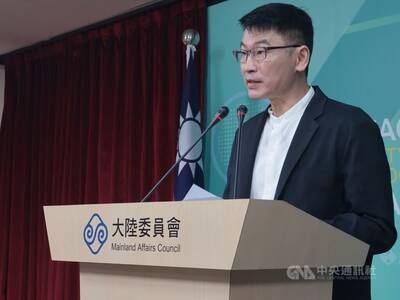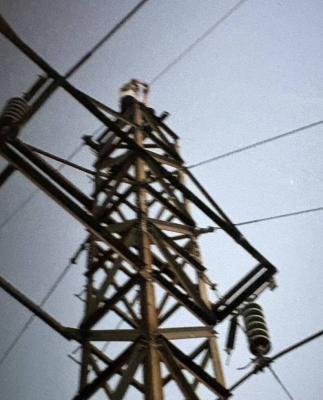A future Chinese attack on Taiwan could be fueled by Russian arms and Russian military technology, according to a new report from the Center for Strategic and International Studies (CSIS).
According to the report, entitled Russia’s Contribution to China’s Surface Warfare Capabilities, Moscow has transferred more than US$30 billion worth of arms and military technology to Beijing since 1991.
The pace of transfers “quickened” after the 1996 Taiwan Strait Crisis which “lent an increased sense of urgency” to China’s military modernization, the report said.
Written by CSIS arms expert Paul Schwartz, the report said that Russian weapons systems and related technology have proven especially important for the development of China’s navy.
“Incorporation of Russian air defense technology, long-range sensors and anti-ship cruise missile systems has enabled China’s maritime forces to significantly improve their defensive and offensive capabilities,” Schwartz wrote.
Russian arms and technology transfers would be “crucial” to China’s anti-access strategy of keeping the US navy at bay in the case of an attack on Taiwan, the report said.
“If successful, China’s anti-access strategy will give its military the freedom to conduct military operations within the contested maritime region as needed to achieve its strategic objectives,” the report said.
“In a future conflict over Taiwan, China’s military leaders would need to deploy forces capable of preventing US carrier strike groups from intervening in the conflict,” it added.
Should China attempt to take Taiwan by force, it not only must keep US forces from intervening at the outset, but also must seize local control of the Taiwan Strait and surrounding seas “in order to conduct expeditionary operations against Taiwan itself,” the report said, adding that China must also maintain local control for the long term if it expects to hold on to Taiwan once it is taken.
To achieve these goals China would rely on Russian weapons and technology.
“Russia has engaged in large-scale arms sales, delivering sophisticated destroyers, advanced weapon systems, radar systems and various components that have been incorporated into indigenous Chinese weapons,” the report said.
Like many Chinese military systems, its domestically built destroyers lean heavily on technology and design expertise acquired through Russian arms imports.
Recently, China has started developing a new generation of supersonic Anti-Ship Cruise Missiles (ASCM) which all appear to be copies or derivatives of previously transferred Russian ASCMs.
Moscow has become increasingly frustrated by China’s reverse engineering practices, which Russia deems abusive, the report said.
“Nevertheless, China continues to utilize Russian equipment and technology in many of the most crucial areas and Russia continues to sell such systems to China,” the report said.
China hopes to take advantage of Russia’s diminished bargaining power as a result of the Ukraine crisis to obtain good terms on future arms deals, the report said.
At the same time, China wants only the most advanced systems in Russia’s inventory and “will seek technology transfers as a condition of additional purchases,” the report said.
Several large-scale arms transactions that have been in the works for several years are finally moving toward completion in part because of the changed international landscape created by the Ukraine crisis, the report said.
These deals include potential sales of the S-400 air defense system, Su-35BM fighter aircraft and LADA class diesel-electric submarines.
The report concludes: “Prospects for increased arms sales from Russia to China seem greater now than they have been in many years.”

‘ANGRY’: Forgetting the humiliations and sacrifices of ‘the people of the Republic of China’ experienced disqualified Lai from being president, Ma Ying-jeou said Former president Ma Ying-jeou (馬英九) yesterday criticized President William Lai (賴清德) over what he called “phrasing that downplayed Japan’s atrocities” against China during World War II. Ma made the remarks in a post on Facebook on the 80th anniversary of the end of World War II. Ma said he was “angry and disappointed” that Lai described the anniversary as the end of World War II instead of a “victory in the war of resistance” — a reference to the end of the Second Sino-Japanese War (1937-1945). The eight-year war was a part of World War II, in which Japan and the other Axis

The Mainland Affairs Council (MAC) yesterday announced a ban on all current and former government officials from traveling to China to attend a military parade on Sept. 3, which Beijing is to hold to mark the 80th anniversary of the end of the Second Sino-Japanese War. "This year marks the 80th anniversary of the end of World War II and the Republic of China’s victory in the War of Resistance [Against Japan]," MAC Deputy Minister and spokesperson Liang Wen-chieh (梁文傑) told a regular news briefing in Taipei. To prevent Beijing from using the Sept. 3 military parade and related events for "united

‘OFFSHORE OPERATIONS’: Also in Dallas, Texas, the Ministry of Economic Affairs inaugurated its third Taiwan Trade and Investment Center to foster closer cooperation The 2025 Taiwan Expo USA opened on Thursday in Dallas, Texas, featuring 150 Taiwanese companies showcasing their latest technologies in the fields of drones, smart manufacturing and healthcare. The Taiwan External Trade Development Council (TAITRA), the event’s organizer, said the exhibitors this year include Hon Hai Precision Industry Co (Foxconn), the world’s largest contract electronics manufacturer; AUO; PC brand Asustek Computer; and drone maker Thunder Tiger. In his opening speech, TAITRA chairman James Huang (黃志芳) said he expected Texas to become a world-class center for innovation and manufacturing as US technology companies from Silicon Valley and Taiwanese manufacturers form an industrial cluster

A 20-year-old man yesterday evening was electrocuted and fell to his death after he climbed a seven-story-high electricity tower to photograph the sunset, causing a wildfire on Datong Mountain (大同山) in New Taipei City’s Shulin District (樹林), the Taoyuan Police Department said today. The man, surnamed Hsieh (謝), was accompanied on an evening walk by a 20-year-old woman surnamed Shang (尚) who remained on the ground and witnessed the incident, capturing a final photograph of her friend sitting atop the tower before his death, an initial investigation showed. Shang then sought higher ground to call for help, police said. The New Taipei